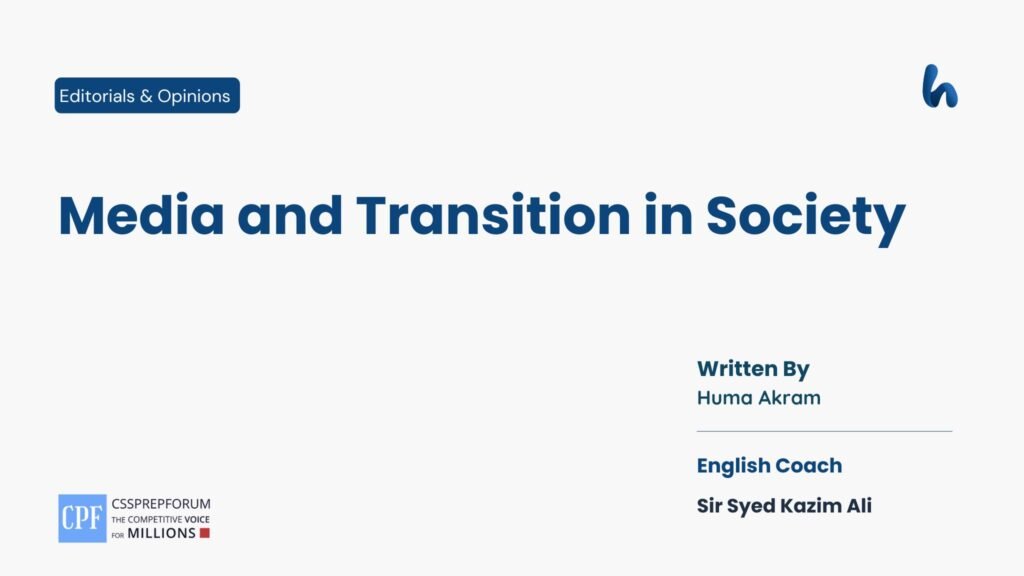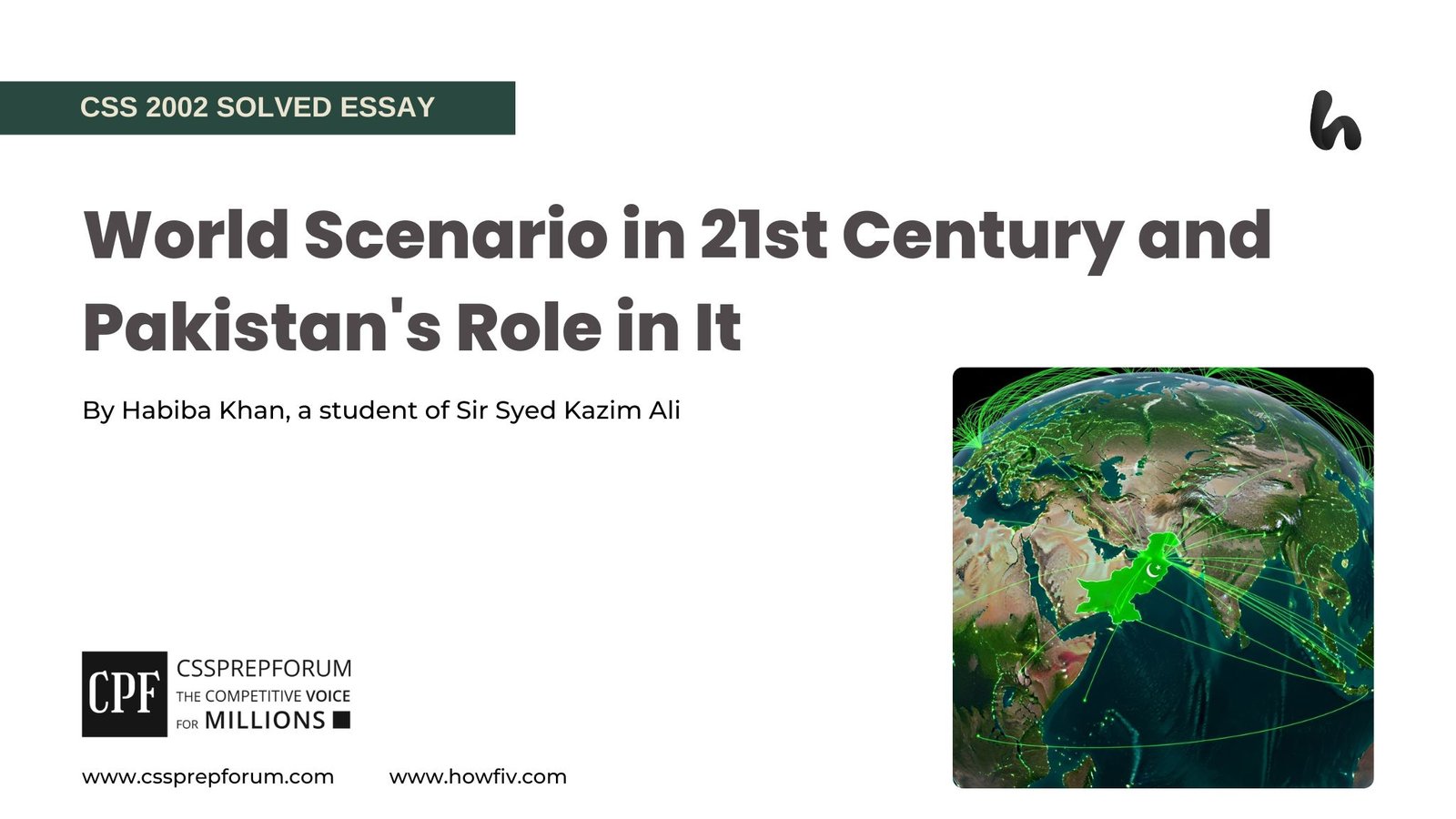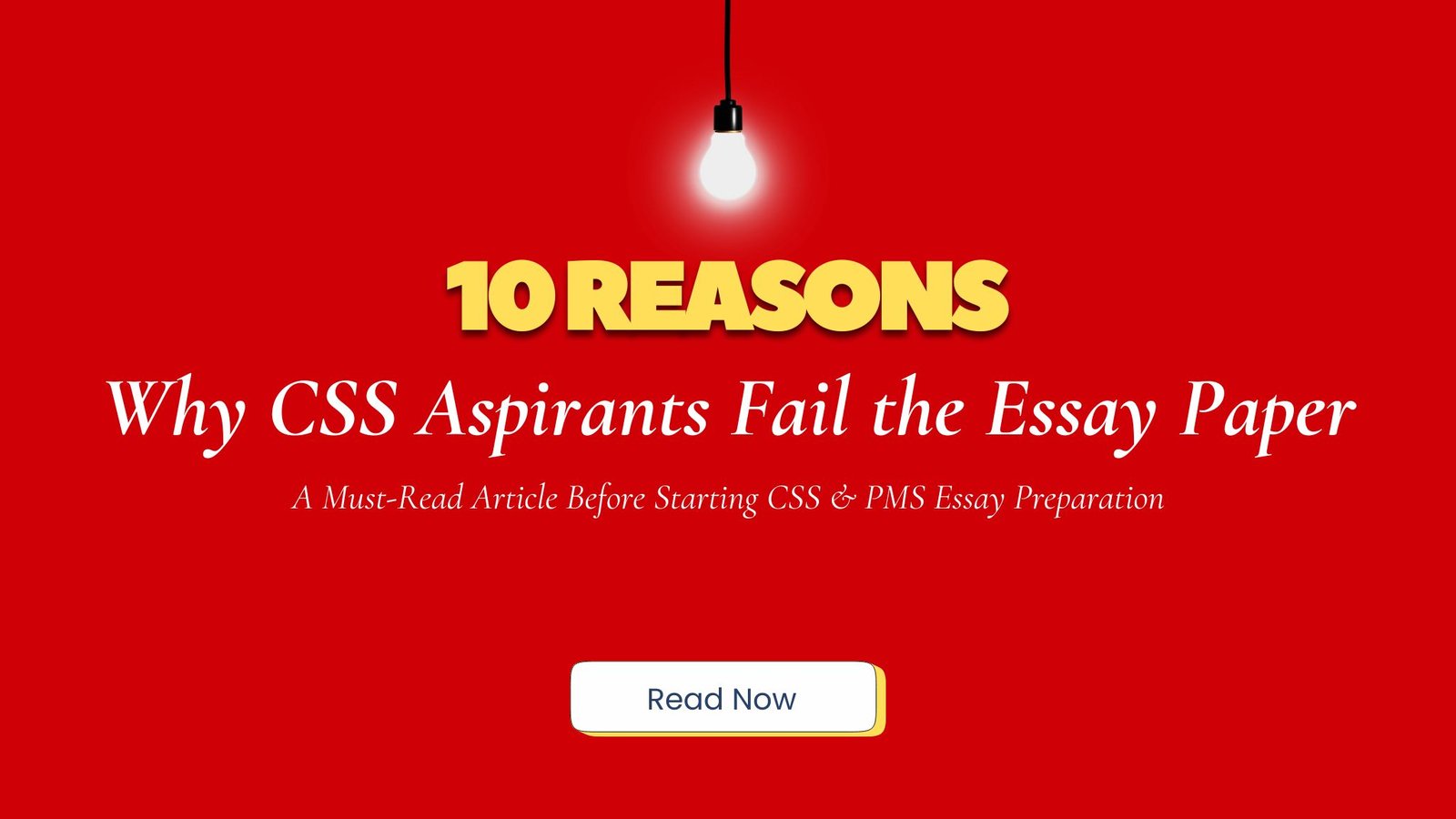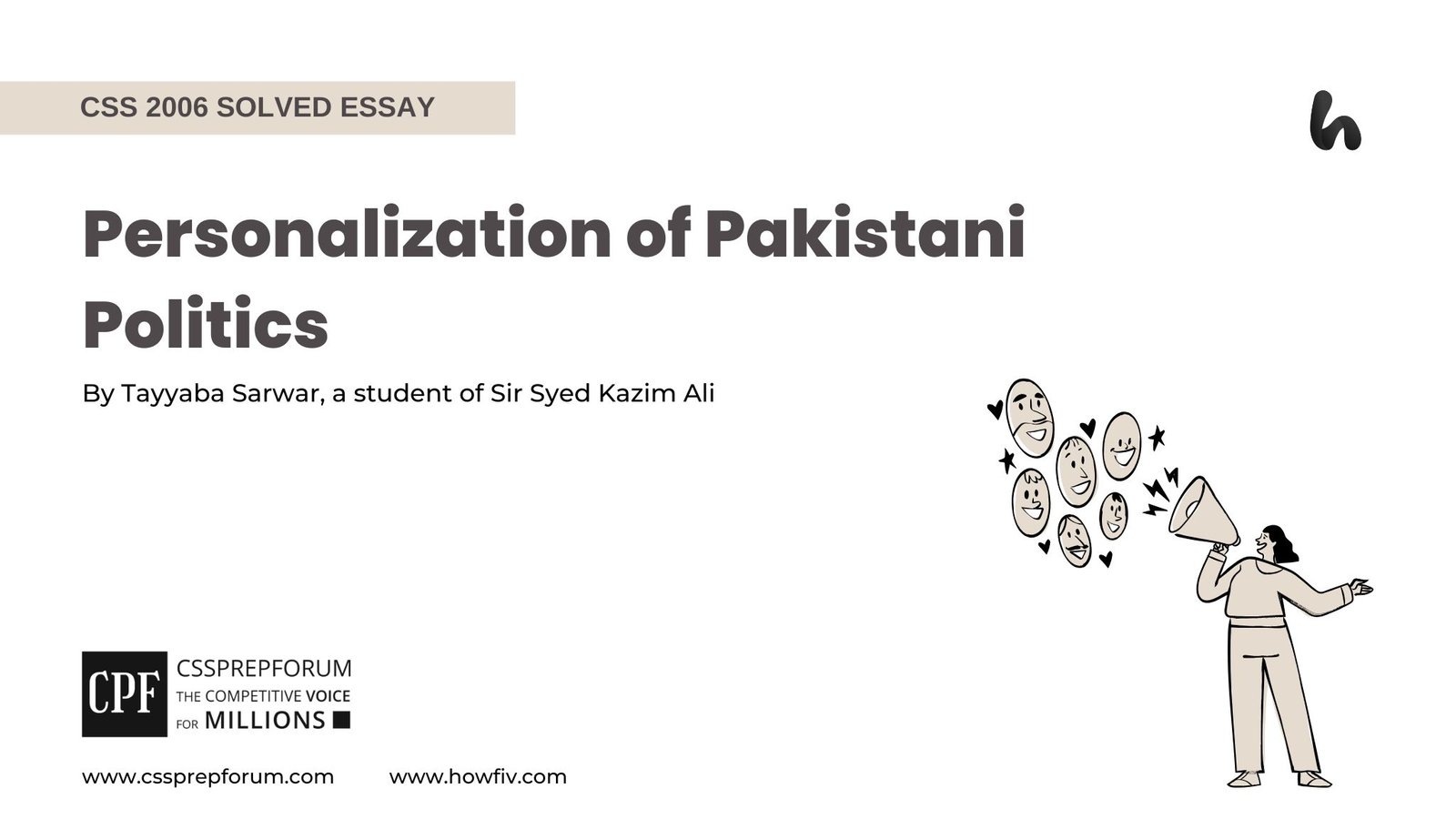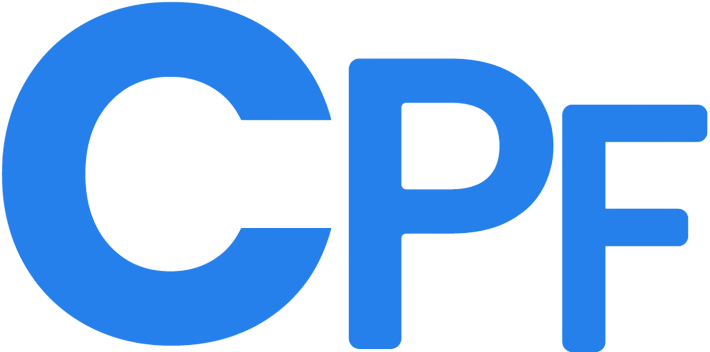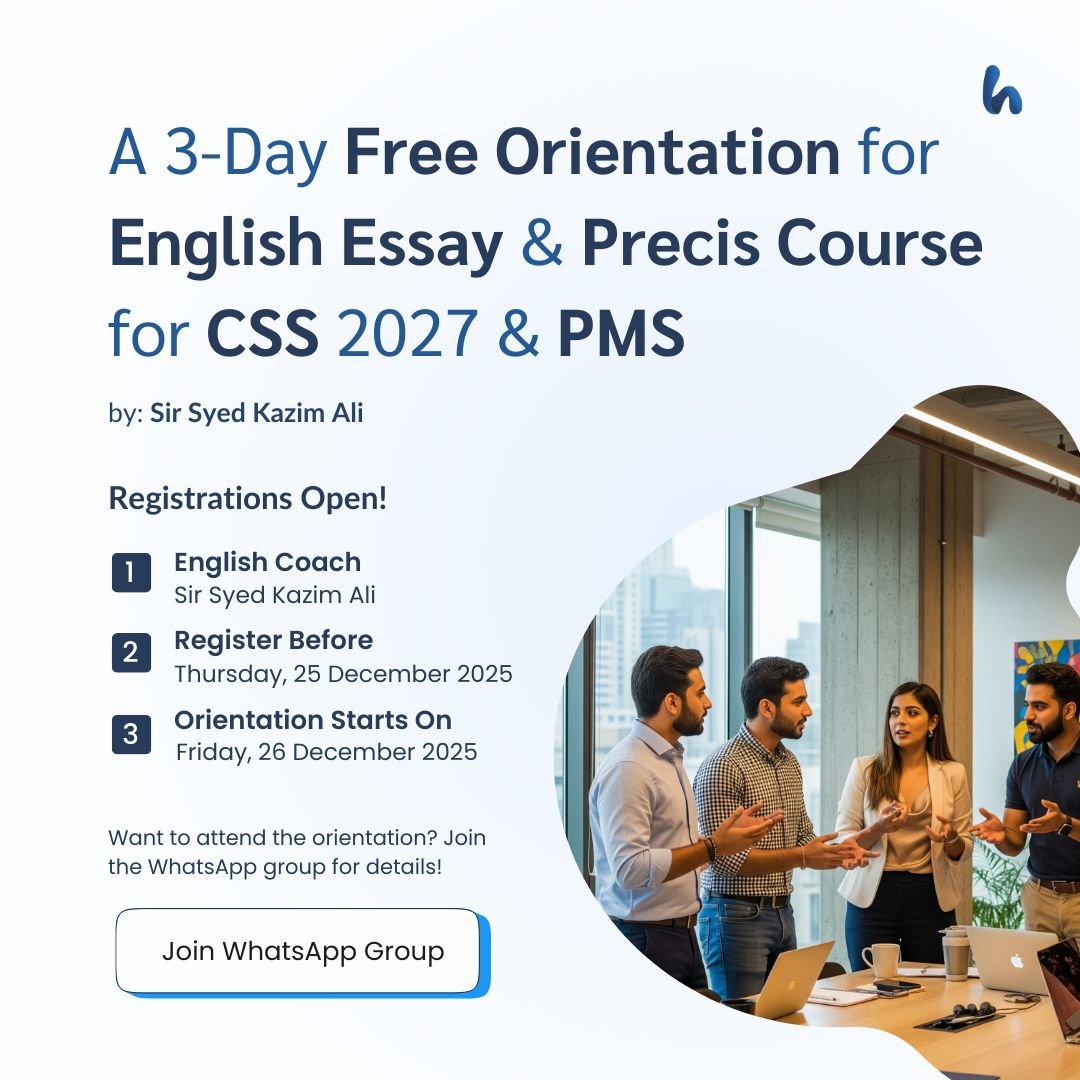Media and Transition in Society | Editorials by CSS & PMS Aspirants
The following article, “Media and Transition in Society“, is written by Huma Akram, a student of Sir Syed Kazim Ali. Moreover, the article is written on the same pattern, taught by Sir to his students, scoring the highest marks in compulsory subjects for years. Sir Kazim has uploaded his students’ solved past paper questions so other thousands of aspirants can understand how to crack a topic or question, how to write relevantly, what coherence is, and how to include and connect ideas, opinions, and suggestions to score the maximum.

Media is the primary force shaping modern society in an era where information is the currency of power. While critics decry its negative effects, from misinformation to privacy concerns, its contributions to societal evolution remain unparalleled. Indeed, it fosters literacy, disseminates knowledge, influences public discourse, and creates economic opportunities. Hence, media remains the linchpin of progress, connecting individuals, institutions, and nations in an age of rapid technological advancement.
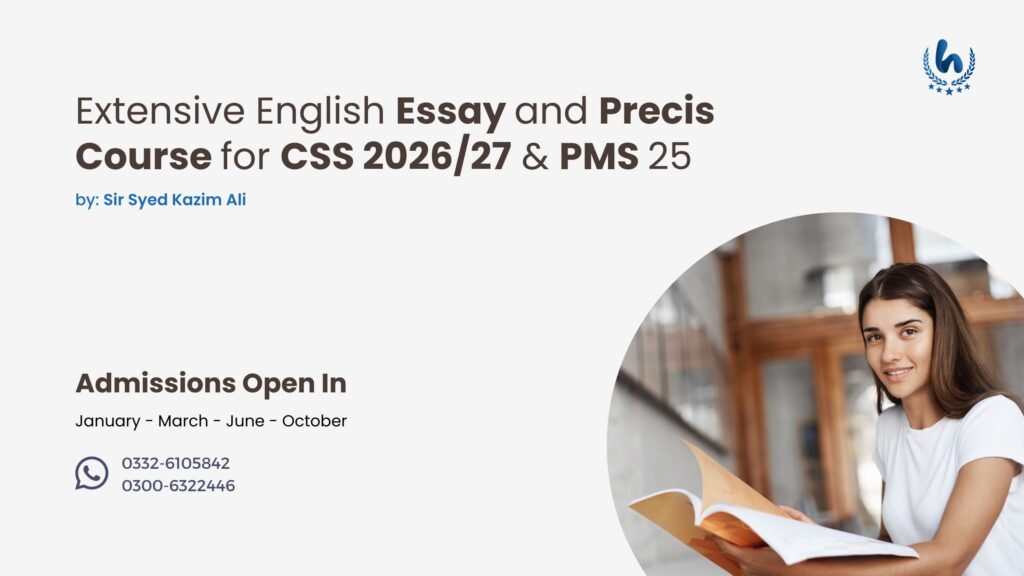
Moving towards the main discussion, the extent to which media has facilitated positive societal transformations and the manner in which its various forms – print, electronic, and social media – have contributed to this evolution must be examined. This consideration forms the discussion’s foundation, which highlights the media’s role in expanding literacy, shaping opinion, delivering information, improving the national image, and fostering employment.
The Printing Press: A Revolution in Literacy
To start with, the printing press ushered in a profound shift in human knowledge long before digital screens became the norm. Before its invention in the 15th century, books were handwritten, scarce, and accessible only to elites, leaving the broader population in ignorance. However, the advent of print media democratized knowledge, making books more affordable and widely available. As historian Elizabeth L. Eisenstein highlighted in The Printing Revolution in Early Modern Europe (1983), the printing press was instrumental in elevating literacy rates, which ensured that education was no longer a privilege but a right. As a result, newspapers informed the masses; journals shaped intellectual discourse; and the then-available textbooks laid the foundation for structured education systems. Therefore, the press not only recorded history but also created it, fundamentally altering the intellectual level of civilizations.
The Power of Print: Molding Public Opinion
Moreover, print media has long wielded the power to influence public perception and policymaking. Throughout history, newspapers and periodicals have been the architects of discourse, shaping opinions on politics, economics, and social issues. For instance, leading publications, such as The Economist and Foreign Affairs, provide an in-depth analysis that influences policymakers and the general public, which construct narratives that define national and global priorities. Furthermore, during major global events – the Cold War, financial crises, or civil rights movements – print media has played a pivotal role in framing debates, informing public sentiment, and holding power to account. Therefore, providing expert analysis and investigative journalism has strengthened democratic institutions and ensured that information remains a tool of empowerment rather than manipulation.
Electronic Media: The Lightning Conduit of Information
Similarly, with the advent of television and radio, information has not been limited to geographical barriers, revolutionizing global connectivity. Before electronic media, access to news was limited by time and space, and events could take weeks to be reported through newspapers. However, breaking news is delivered instantaneously, shaping public reactions in real-time. A 2022 Pew Research study found that 75 per cent of the global population still relies on television for news, with radio serving as an essential lifeline in remote regions. In particular, during times of crisis – natural disasters, political upheavals, or global pandemics – electronic media ensures that life-saving information reaches people instantly. Moreover, whether through live broadcasts, televised debates, or documentary exposés, television and radio have not only informed but also mobilized societies, thus fostering a more interconnected and responsive world.
Soft Power and the Global Image Game
In addition, media is not a medium for information but a vehicle for shaping national identity. Countries worldwide have utilized media to project their cultural and political narratives, influencing global perceptions and diplomatic ties. For example, the rise of Turkey’s television industry exemplifies this phenomenon. The historical drama Diriliş: Ertuğrul became a cultural export, which draws admiration worldwide and fosters a positive image of Turkey’s heritage. Additionally, soft power – facilitated by the media – has strengthened international relations, increased tourism, and enhanced economic engagement. Hence, by showing traditions, values, and national achievements, electronic media has allowed nations to construct their narratives beyond political rhetoric, presenting a more humanized and compelling image to the world.
Social Media: A Marketplace of Opportunity
Likewise, in the digital age, the media’s influence surpasses information and has reshaped the very structure of employment. Social media platforms, such as Upwork and Fiverr, have democratized work, enabling freelancers from developing nations to access global markets. Unlike traditional employment structures that require physical presence, these platforms allow professionals, writers; designers; and developers, to secure clients worldwide, transforming economies and reducing unemployment. Subsequently, the gig economy, fueled by social media, has challenged conventional employment norms, which provide flexibility, inclusivity, and financial independence. Thus, digital platforms have created a more dynamic, self-reliant, and globally integrated workforce by breaking geographical and structural barriers.
Cyber Threats: A Dark Cloud Over Digital Media
Nevertheless, the media’s expansion has not been without consequence. The rise of social media has introduced significant cybersecurity risks, exposing users to hacking, identity theft, and data breaches. For instance, cybercriminals exploit personal information, manipulating online platforms for financial fraud and political propaganda. And critics argue that the very openness that makes social media powerful also makes it dangerous, creating a digital landscape rife with misinformation and exploitation. However, these threats are not insurmountable. Undoubtedly, with increased digital literacy; improved regulatory frameworks; and robust cybersecurity measures, individuals and governments can safeguard online spaces while retaining the transformative benefits of digital media. Hence, social media companies are adapting and implementing stricter authentication processes and content moderation strategies to counteract the dark side of the digital revolution.
The Mental Health Conundrum
More importantly, the media’s impact on mental health remains a growing concern. Sadly, the constant influx of information – coupled with unrealistic portrayals of beauty, success, and lifestyle – has contributed to rising levels of anxiety, depression, and self-esteem issues. Notably, social media has created an environment where validation is often tied to digital engagement, fostering a toxic comparison culture. However, dismissing media entirely ignores the strides it has made in mental health awareness. Platforms like Crisis Text Line, Timely Care, and 7 Cups have provided free mental health resources, making psychological support more accessible. Additionally, psychologists and mental health advocates use digital platforms to educate the public, which breaks stigmas and fosters more open discussions around mental well-being. Ultimately, rather than being an inherent threat, media is a tool – the impact of which depends on how it is wielded.
In summary, the role of media in modern society is undeniable. While cybersecurity and mental health concerns persist, they do not negate the media’s immense benefits: literacy expansion, information dissemination, global connectivity, cultural representation, and economic transformation. Indeed, it is a force that continues to shape political landscapes, challenge societal norms, and bridge cultural divides. Therefore, as media evolves, its consuming and regulating approaches evolve, ensuring its vast potential is harnessed for progress rather than peril. So, in the human advancement age, media is not only an observer but also the storyteller, catalyst, and architect of transformation.
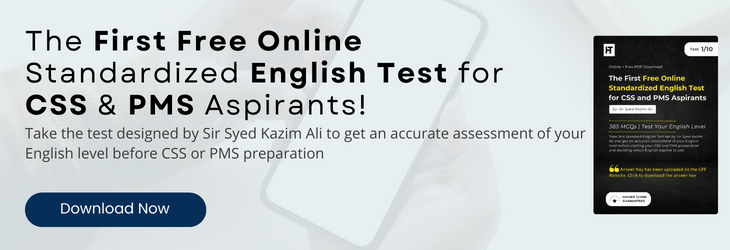
CSS Solved Past Papers’ Essays
Looking for the last ten years of CSS and PMS Solved Essays and want to know how Sir Kazim’s students write and score the highest marks in the essays’ papers? Then, click on the CSS Solved Essays to start reading them.
CSS Solved Essays
CSS Solved General Science & Ability Past Papers
Want to read the last ten years’ General Science & Ability Solved Past Papers to learn how to attempt them and to score high? Let’s click on the link below to read them all freely. All past papers have been solved by Miss Iqra Ali & Dr Nishat Baloch, Pakistan’s top CSS GSA coach having the highest score of their students. General Science & Ability Solved Past Papers

